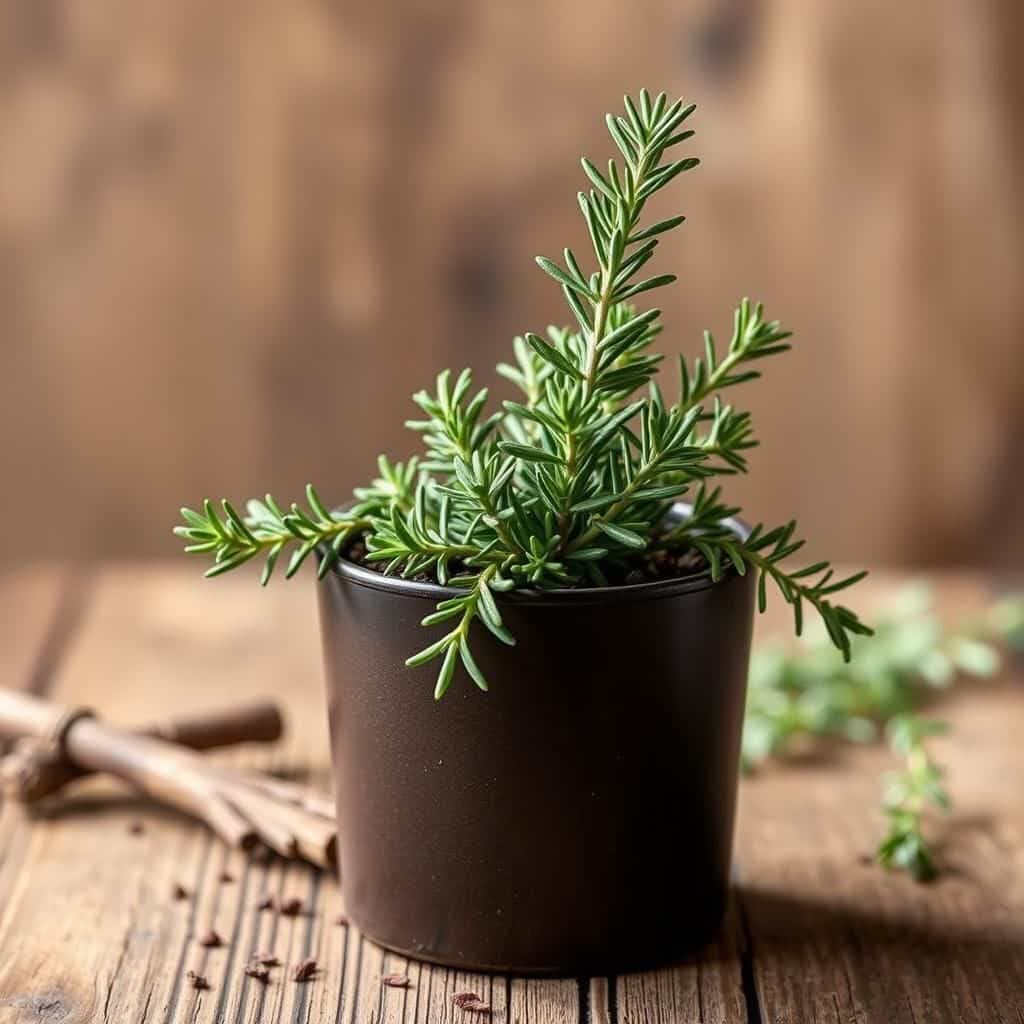Ultimate Guide: How to Propagate Rosemary Plant for Beginners

Rosemary is a fragrant and versatile herb that not only enhances culinary dishes but also adds beauty to gardens. For beginners eager to cultivate their own rosemary plants, propagation can be an exciting and rewarding process. Whether you're looking to expand your herb garden or share this delightful plant with friends, understanding the basics of rosemary propagation is essential. In this ultimate guide, we will explore various methods, tips, and best practices to successfully propagate rosemary, ensuring you can enjoy this aromatic herb in abundance. Get ready to embark on a journey of growth and flavor!
How to Successfully Propagate Rosemary Plants
To propagate the rosemary plant effectively, you can use either seeds or stem cuttings, with the latter being the most popular and faster method. Begin by selecting a healthy rosemary stem from an established plant. Cut a 4-6 inch section just below a node, then remove the lower leaves, leaving a few at the top. Dip the cut end in rooting hormone to encourage faster growth. Place the cutting in a small pot filled with moist, well-draining soil, ideally a mix of potting soil and perlite. Water the cutting lightly and cover it with a plastic bag or a clear plastic dome to retain moisture. Keep the cutting in a warm area with indirect sunlight until roots develop, which can take several weeks. Once established, you can transfer the new plant to a larger pot or into your garden.
Choosing the Right Time for Propagation
Timing is crucial for the successful propagation of rosemary. The best period is during the spring or early summer when the plant is actively growing. During this time, the heat and light levels are optimal, promoting root development and minimizing stress on the cuttings. Avoid propagation during the colder months, as this can hinder growth and increase the risk of rot.
Preparing Cuttings for Propagation
When taking cuttings from a rosemary plant, it's important to choose healthy stems free from disease. A clean, sharp pair of scissors or pruning shears should be used to avoid damaging the plant. Cut the stem just below a node since this is where roots are more likely to form. After cutting, it's advisable to remove any leaves from the lower part of the stem to prevent decay when planted in soil, ensuring only the upper leaves are left intact.
Selecting the Right Soil and Containers
The choice of soil is vital for successful rosemary propagation. A soil mix that provides excellent drainage is essential, as rosemary is susceptible to root rot in overly wet conditions. A combination of potting soil and perlite or sand works well, allowing for sufficient airflow and drainage. Additionally, make sure to use containers with drainage holes to prevent water accumulation.
See also:
Watering Techniques for New Cuttings
When watering your newly propagated rosemary cuttings, moderation is key. Overwatering can lead to rot, while underwatering can cause the cuttings to dry out and die. Initially, mist the cuttings lightly to keep humidity high without saturating the soil. As the cutting begins to grow roots, you can gradually increase the amount of water, ensuring that the soil remains slightly moist but not soggy.
Signs of Successful Root Development
Understanding the signs of successful root development is essential for ensuring your rosemary cuttings are ready to be transplanted. After a few weeks, you can gently tug on the cuttings; if you feel resistance, this indicates that roots have started to form. Additionally, new growth at the top of the cutting is a positive sign that the plant is establishing itself.
| Aspect | Recommendation |
|---|---|
| Ideal Timing | Spring or early summer |
| Cutting Length | 4-6 inches |
| Soil Type | Well-draining mix with perlite |
| Watering Frequency | Mist lightly, keep soil slightly moist |
| Signs of Rooting | Resistance when tugging, new growth |
Essential Tools and Materials for Rosemary Propagation
To successfully propagate rosemary, having the right tools and materials is essential. Begin with high-quality cutting shears to take healthy stems from an existing plant; ensure they are clean to prevent disease. You will also need potting soil that is well-draining, alongside small pots or trays for planting the cuttings. Finally, consider using rooting hormone, which can enhance root development and increase the chances of successful propagation. Being prepared with these essential items will streamline the process and improve your chances of cultivating thriving rosemary plants.
Choosing the Right Rosemary Variety
When propagating rosemary, it's important to select the right variety that suits your gardening needs. Common types include Tuscan Blue, which features upright growth and vibrant blue flowers, and Prostratus, known for its trailing habit ideal for containers. Consider your local climate and the specific characteristics of each variety, as some may be more tolerant to temperature variations and pests than others. This choice will directly influence the success of your propagation efforts.
Best Time for Propagating Rosemary
The timing of your rosemary propagation plays a crucial role in success rates. The best time to propagate rosemary is during the spring or early summer when the plant is actively growing. This period offers optimal lighting conditions and humidity, which are vital for root development. Avoid propagating during colder months when the plant is dormant, as this can reduce the chances of successful rooting.
See also:
Step-by-Step Propagation Process
The step-by-step process of propagating rosemary involves taking healthy cuttings from a mature plant, ideally around 4-6 inches long. Remove any leaves from the lower half of the stem to ensure that the cuttings can be submerged in soil without interference. If using rooting hormone, lightly dip the cut end into it before placing the cutting into the prepared potting mix. Ensure the cuttings are kept moist but not over-watered, and cover them with a plastic bag or a mini greenhouse effect to maintain humidity during the rooting phase.
Care for Your New Rosemary Cuttings
After planting your rosemary cuttings, providing proper care is essential for their survival and growth. Place the pots in a location with indirect sunlight to prevent overheating and water stress. Regularly check moisture levels in the soil; it should remain consistently damp but not soggy. Once roots have started to form and new growth appears, gradually acclimate them to more direct sunlight. This careful nurturing will ensure that the cuttings develop into strong, healthy plants.
Common Issues and Troubleshooting
While propagating rosemary, you may encounter common issues such as root rot or insufficient growth. Root rot often results from over-watering, so be mindful of your watering habits and ensure good drainage in your pots. If cuttings appear to be wilting or yellowing, this may indicate that they are not receiving enough light or are suffering from stress. To troubleshoot these issues, adjust your watering schedule and ensure appropriate light conditions, and be patient, as propagation takes time and care.
Questions from Our Readers
How can I propagate rosemary using cuttings?
To propagate rosemary using cuttings, take a 4-6 inch cutting from a healthy plant, ensuring it has several leaves. Remove the lower leaves, then dip the cut end in rooting hormone to encourage root growth. Place the cutting in a well-draining potting mix, keep it moist, and provide it with indirect sunlight until roots develop.
What is the best time of year to propagate rosemary?
The best time to propagate rosemary is during spring or early summer when the plant is actively growing. This season offers optimal conditions for rooting as the temperatures are warmer and the days are longer, providing the cuttings with enough light to thrive.
See also:
Do I need to use a rooting hormone for rosemary propagation?
While it’s not strictly necessary, using a rooting hormone can significantly improve the chances of successful propagation. The hormone helps stimulate root development, making it easier for the cuttings to establish in their new environment and leading to a healthier plant overall.
How long does it take for rosemary cuttings to root?
Rosemary cuttings typically take about 2 to 4 weeks to root, depending on the conditions. Providing them with consistent moisture, warmth, and indirect light will help speed up the process. Check for roots by gently tugging on the cutting; if there is resistance, roots have likely formed.

If you want to read more articles like Ultimate Guide: How to Propagate Rosemary Plant for Beginners, we recommend you check out our Gardeners category.
Leave a Reply
Related Articles